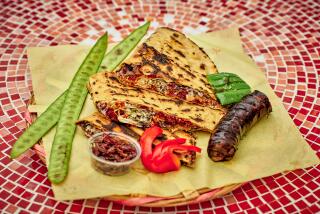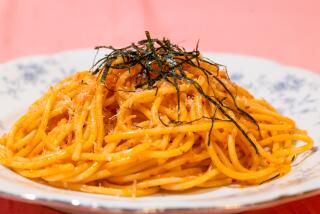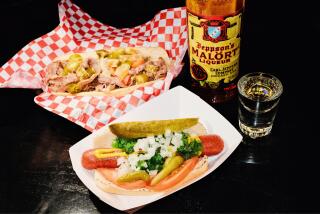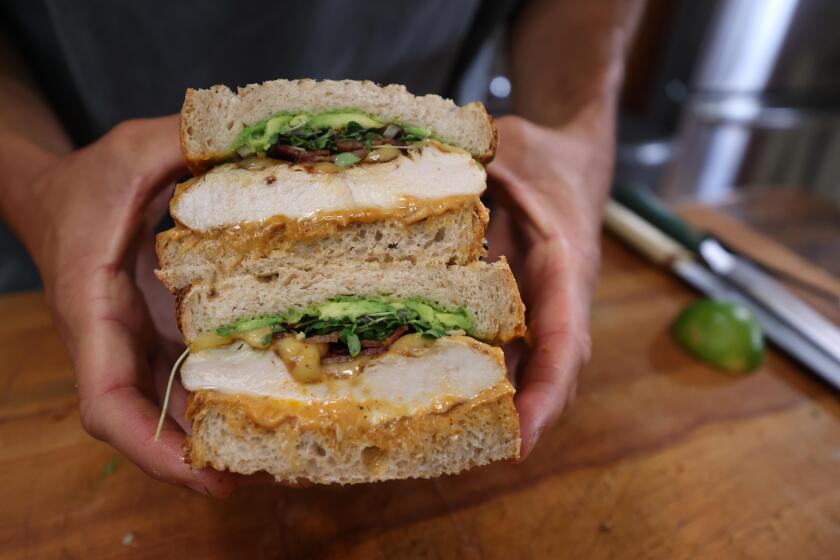<i>Bollito misto</i>, Italy’s winter comfort dish, suits warm L.A. just fine
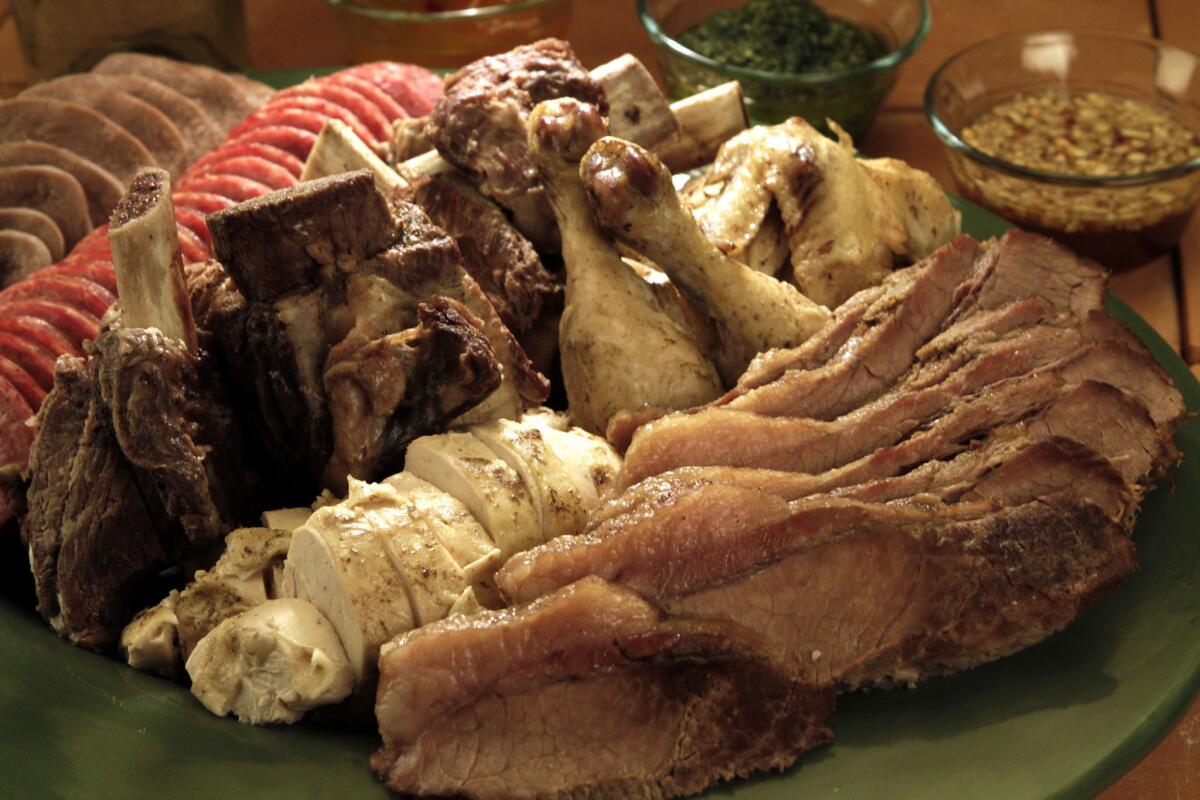
OK, it’s hardly bollito misto weather. But we can pretend. At least once every winter, I need to make the “mixed boiled meats” of northern Italy, one of the easiest and most festive meals I know. By rights, snow should be deep outside the window, but here we are, with the temperature nowhere near freezing. Only a few days ago, Angelenos were walking around in shorts. And you know what? Bollito misto suits milder weather just fine.
I’ve had it in Modena served from elaborate silver carts in a posh restaurant, at my friend Elena’s house in Milan and, most memorably, in Piedmont, land of Barbaresco and Barolo — and also an extraordinary breed of cattle called razza Piemontese. That’s the 4-year-old “veal,” used to make the region’s famous carne cruda — raw meat hand-chopped and perfumed with just a thread of olive oil and maybe a drop of lemon or a shaving of white truffles.
Every December, the market town of Carrù is the site of the fiera di bue grasso (“fair of the fattened livestock”). It may be snowing, it may be bitter cold, but the proud owners bring out their beasts and parade them before the judges. “It’s like a beauty contest, almost like judging bodybuilding,” Emmanuella Currado Cordero, a local veterinarian, told me. Afterward, the winners, the mayor and the butchers convene at Ristorante Moderno to feast on boiled calf’s head, tongue, tail and various parts of the animal.
The dining room has travertine floors, plain wood wainscot and wooden chairs with rush seats. The sole decorations are framed menus from the 1920s and ‘30s and a collection of antique plates from the once-famous ceramic center of Mondovì. Once you sit down, a server will propose antipasti one by one. And then she’ll list the primi, perhaps a risotto or the famous tajarin (tagliatelle) of the region.
Go easy, because soon a cart will roll up to the table laden with the bollito misto, and you’ll be asked which meats you prefer — a little calf’s head, oxtail, short ribs, brisket, chicken, cotechino sausage — or tongue? A little of each is a good idea. And maybe some potato purée.
The meat comes with several sauces, including a sharp, fragrant bagnet verd (a.k.a. salsa verde), some mostardo (preserved fruits with mustard) and a hazelnut and wild honey sauce, a house specialty. Usually, there’s also cugnà, a grape conserve made from fresh grape must and pears cooked together with a cinnamon stick and a few cloves.
Of course you’re drinking Piedmontese wine — maybe a velvety Barbera from Vietti, an expressive Barbaresco from Gaja or Produttori del Barbaresco (depending on how flush you’re feeling) or a profound Barolo from Sandrone, Altare or Clerico.
It’s a feast to be savored over hours, bite by bite, sip by sip. Each of the meats has been cooked in the simmering broth until it’s perfectly done. And though the dish sounds dishearteningly plain, because of the quality of the ingredients, it has a clarity of taste that can be a revelation. Those piquant sauces add just enough contrast to keep things interesting. Such a plain meal, too, shows off the gorgeous wines. And because there’s very little fat and no heavy sauces, bollito misto is a lighter meal than you’d think, a wonderful way to honor all the various parts of the animal.
We may not have a cattle fair here in L.A., but there’s no reason we can’t celebrate winter, such as it is here in Southern California, with bollito misto.
More to Read
Eat your way across L.A.
Get our weekly Tasting Notes newsletter for reviews, news and more.
You may occasionally receive promotional content from the Los Angeles Times.
